Foot pain has many faces. It can be an aching sensation or sharp pain which makes it difficult for you to keep standing. It can arise from many different reasons like not wearing proper footwear or because of the way you walk, but regardless of how foot pain has found its way into your life there are some great ways to alleviate it.
The good news is that they range from simple and natural remedies to more invasive surgical solutions. The bad news is that it’s not easy to figure out which one will work for your needs. You can try ice, over-the-counter medications, physical therapy or surgery, but the truth is you won’t know if it’ll really make a difference until you’ve tried it on for size! This article explores some common ways people deal with foot pain and what their benefits and drawbacks are so you can make an educated decision about how best to manage yours. Be sure to read through all of them carefully before making up your mind.
What are the different types of foot pain?
The most common causes of foot pain include:
- Achilles tendinitis
- Achilles tendon rupture
- Avulsion fracture
- Bone spurs
- Broken foot
- Broken toe
- Bunions
- Bursitis (joint inflammation)
- Corns and calluses
- Diabetic neuropathy (nerve damage caused by diabetes)
- Flatfeet
- Gout (arthritis related to excess uric acid)
- Haglund’s deformity
- Hammertoe and mallet toe
- High heels or poorly fitting shoes
- Ingrown toenails
- Metatarsalgia
- Morton’s neuroma
- Osteoarthritis (disease causing the breakdown of joints)
- Osteomyelitis (a bone infection)
- Paget’s disease of bone
- Peripheral neuropathy
- Plantar fasciitis
- Plantar warts
- Psoriatic arthritis
- Raynaud’s disease
- Reactive arthritis
- Retrocalcaneal bursitis
- Rheumatoid arthritis (inflammatory joint disease)
- Septic arthritis
- Stress fractures
- Tarsal tunnel syndrome
- Tendinitis
- Tumors

How do I know if my foot pain is serious?
If you have severe foot pain or your foot was injured in some way, it’s important that you seek medical attention to rule out any underlying conditions. If the cause of your pain is simply wearing the wrong shoes, you probably don’t need to go to a doctor. However, if your symptoms are intense and have lasted for more than three days, you should definitely see an orthopedic doctor.
You should definitely not hesitate to consult a doctor if you:
- Experience severe pain or massive swelling
- Can’t put weight on your broken, sprained, or otherwise injured foot
- Have a condition that’s at risk of getting worse if left untreated (such as an infection) and you also experience symptoms like Fever, Chills, Sweating, Redness Swelling or Warmth in the affected area
- Have an open wound or
- Experience burning pain, numbness or tingling at the bottom of your foot
How can I relieve foot pain?
Unfortunately this is not a one-size-fits-all type of answer.
Your doctor will examine the injured area to determine how best to treat it. He or she will take into account things like:
- How long you’ve had your symptoms
- What injuries have occurred in the past.
- Whether you have any pre-existing conditions that might complicate treatment (such as diabetes) and if so, whether they’re being controlled
In general, if your conditions are not too bad, these 10 methods usually work for most people. So give them a try:
1. Get a foot bath
A $3 home remedy that usually works is to get a bucket and fill it with hot water mixed with some dish soap that’s designed to moisturize (like Dove). Then soak your feet in the solution for about twenty minutes. This can help soothe the pain as well as soften up any hard skin, which will make it easier for you to file off any rough spots.
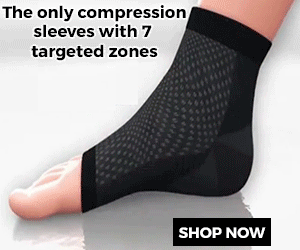
2. Compress your foot with ice
Put a handful of crushed ice in a plastic bag and cover it with a towel (not too thick). Then place it on the bottom of your affected foot for as long as it’s comfortable. This will help reduce inflammation and numb the pain somewhat, but only temporarily.
3. Take over-the-counter medications
There are many anti-inflammation and pain medication options out there to choose from, but not all of them work the same way. For example, ibuprofen (Advil) has both anti-inflammatory and painkilling properties. Meanwhile aspirin is more effective for reducing pain than swelling.
4. Take acetaminophen (Tylenol)
This will definitely reduce your pain, but it probably won’t work for inflammation the way ibuprofen or aspirin does. In fact, some studies show that using anti-inflammatories right after an injury is even more effective than using Tylenol.
5. Wear a night splint
A night splint keeps your foot in a flexed position, which will elevate pressure on the plantar fascia and therefore reduce pain. It can also stretch your calf muscles. However, some people find them uncomfortable.
6. Get physical therapy or a massage
These methods are often recommended by doctors, and for good reason.
Going to physical therapy will help your body adapt to the pain so you can function better every day. Meanwhile a massage therapist might use deep tissue massage or myofascial release techniques to soften up any contracted muscle tissue or increase blood flow to the affected area.
7. Get some new shoes
Sometimes the best way to deal with foot pain is just by investing in a different pair of shoes. If you have flat feet, for example, look for a shoe that has better arch support (one good option: The Superfeet Black Premium Insoles). Or if your foot rolls inward or outward too much when you walk (a condition known as overpronation or supination), you could get yourself a shoe that will help keep it in place.
8. Do some stretching
This is one of the best ways to deal with plantar fasciitis and heel spurs, because it’s so simple but also very effective. All you have to do is stand on the ball of your foot with your heel on the ground and then push back. You shouldn’t feel pain or discomfort, but you should feel a stretch in your calf muscles and Achilles tendon. Hold this position for 10-20 seconds a few times throughout each day.

9. Get custom orthotics
Custom orthotics are inserts that go inside your shoe and help keep your foot in a healthy position. They have little bubbles of varying thicknesses that help you distribute weight differently without having to change how you walk (which is why using them usually won’t cause pain). Some research has found that custom orthotics can reduce symptoms by about 50% if worn regularly.
10. Buy some good arch supports
This will help redistribute your weight so that you put less stress on the plantar fascia. Look for ones made from memory foam or a similar material, because they’ll conform to your foot the way good orthotics do (without being custom-fit).
Can foot pain be related to heart problems?
At times, yes. Sometimes foot pain can indicate a medical issue with the heart or be brought on by certain types of medications, so always let your doctor know if you’re experiencing it so you can rule these things out.
If you come home from a long walk or run and your feet hurt, it may be just a simple muscle strain. Maybe the reason is just fatigues. But it could also be a sign of atherosclerosis. Atherosclerosis is a hardening of the arteries. Untreated, this can lead to serious problems, including heart attack or stroke.
I don’t want to be too negative and while this can be challenging to recognize for you or me, it is relatively easy for health care providers to diagnose peripheral arterial disease. So if you experience symptoms like ongoing cramps or pain after getting enough water or fluids, hair loss in the specific area, numbness or a weakened or absent pulse, please make sure to seek medical help as fast as possible to get this checked.
What can I do if walking hurts too much?
Since walking is the most basic and common activity related to ankle, foot and leg pain (and it requires only two feet!), it’s not surprising that it can be really challenging if you have this type of discomfort.
If that’s just your case, don’t worry – there are still things you can do! You may also consider adding weight training to your exercise routine. Stronger muscles can take pressure off the aching joints, making it easier for you to manage everyday activities (like walking and standing) without pain.
Just remember that there’s no need to push yourself too hard when you’re trying something new or switching up your workout. If you lift weights and walk is still too painful, that doesn’t mean you’re missing out on what your legs are capable of. It may just be a matter of finding the right balance in your routine to make things less difficult.
You’ve heard it said before: Ice is one of the most effective treatments for pain and swelling. And when it comes to foot pain, icing can help with several different conditions, including plantar fasciitis (heel pain) and diabetic neuropathy.
Applying a cool pack to your skin can quickly lower the temperature of inflamed tissue, which decreases blood flow. This is both painful and helpful: It hurts because the cold temperature triggers a set of pain receptors known as “nociceptors,” but it also reduces swelling, inflammation and damage caused by free radicals (cells that can harm tissues and lead to problems like arthritis).

In addition, applying ice can help reduce the activity of pain-controlling spinal cord cells in the brain. As a result, it often lessens how much you feel what’s going on with your inflamed feet.
Just remember not to keep it on for too long – it’s important to give your skin a chance to warm up and recover before you apply another cool pack. And never put ice directly on your skin, especially if it’s been injured (it can cause frostbite).
If that wasn’t enough, there are other times when applying ice may not be the best approach – including after a surgery like bunionectomy.
If you’re having trouble moving around or walking because of your foot pain, there are some over-the-counter medications that can help. One example is ibuprofen (Advil or Motrin). This product works by reducing a chemical in the body called prostaglandins, which creates fever and inflammation. It can help take some of the edge off (and we all know how important that is when you can’t stand on your feet anymore)!
Getting yourself some compression stocking or socks is maybe the most helpful advice I give to patients. Not only can they improve the appearance of your legs, but they’re also a great way to treat and prevent swelling in people with conditions like phlebitis or deep vein thrombosis .
Since ankles and feet are at risk for swelling when you have these conditions, compression stockings work by compressing your lower legs to improve blood flow.
In these cases, you need support at the ankle and the calf. There are a lot of brands out there, so make sure to measure your leg before buying (you can use a tape measure) – but don’t worry, if you buy online , most sites have instructions on how to do it correctly!
If all these options don’t seem to be working for you, physical therapy might be a way to go. The treatments usually focus on improving muscle strength and flexibility in the lower leg and ankle.
At the same time, they help patients learn how to walk more comfortably with flat feet or high arches (or other conditions like bunions).
In some settings, physical therapists may use electrical stimulation (like ultrasounds) or give you a cortisone shot at the same time. These are great options if your muscles are too tight – but they should only be used by a professional who is experienced in treating feet!
Then again, if symptoms like swelling and pain don’t get any better with these treatments, it might be time to think about surgery .
Most people don’t need any kind of procedure – but if your pain is keeping you from doing the things that matter most (and medications or exercise doesn’t help anymore), a doctor might recommend an operation like bunionectomy or tendon release.
These procedures are common and relatively safe, but they do require some recovery time. Physical therapy may also be a part of your post-op rehab – and it can even help you recover more quickly by improving circulation.
The most important thing is to never ignore any kind of foot pain! If something doesn’t feel right after using these remedies for a while (or if it gets worse), make sure to visit your doctor as soon as possible.
What products can help me get rid of foot pain?
1. Compression Socks
Targeted compression that stabilizes the area of pain can enhance blood circulation for a faster and better regeneration. Additionally, compression socks relieve pain and swelling of the feet. They can also help in healing after foot surgery and reduce the risk of injuries such as sprains or blisters by providing protection to sensitive areas.
2. Foot Creams
Severe dryness of the skin can often trigger several cases of foot pain, especially when it comes from cracked heels and calluses . A good foot cream offers countless benefits to the skin of your feet. They can hydrate, soften and repair the damaged skin – all while protecting against inflammation and foot pain!
3. Foot Soaks
In addition to helping relieve pain, soaks are also beneficial for removing dead skin cells that cause peeling, cracking or thickening of the heels.
4. Bunion Splints
If the pain is caused by a bunion or hammertoe, wearing a bunion splint can reduce inflammation and realign your toe so you can walk comfortably again without causing irritation of the joint or surrounding area. When used correctly, splints can be worn all day long as it provides relief from foot pain.
5. Orthotics
Customized orthotics for the feet are particularly beneficial for people who suffer from chronic foot pain . They offer personalized support and reduce stress on the knee joints, hips and back. This is especially useful if you spend much of your time standing or walking in workplaces like construction sites or hotels.
On average, most people who use orthotics take about six weeks to notice a difference, but the full effects of wearing them can be seen within four months.
6. Plantar Fasciitis Socks
If you’re suffering from plantar fasciitis, foot pain may shoot up from your heels to your toes when getting out of bed in the morning. This chronic condition can be incredibly painful and cause stiffness and swelling in the feet. In order to alleviate this problem, wearing a Plantar Fasciitis Sock is recommended. Its backless design allows for your heel to get the best support when you walk and heal tired feet during sleep .

7. Massaging Tools
The use of massaging tools can help enhance blood circulation, relax tight muscles and muscles, improve flexibility and restore healthy function to the ligaments, tendons, and the muscles of your feet. In addition to making foot pain go away, massaging tools can also help improve the overall appearance of the skin on your feet as well as prevent various types of infections .
8. Insoles and Arch Supports
Many foot conditions are worsened by having improper support for your feet. If you have flat feet, plantar fasciitis or just experience pain from walking and standing for long periods of time, insoles and arch supports can provide the stability that relieves you from discomfort.
9. Toe Spacers
Toe spacers can help spread your toes apart and alleviate the pain of overlapping toes . They can also prevent a common reason for foot surgery – bunions.
10. Orthopedic Shoes
Shoes that are specifically designed for people who suffer from foot problems can provide additional support, reduce pressure on the soles of your feet, correct alignment and improve balance. By choosing the right type of shoes for your feet, you can go from feeling foot pain to walking with confidence again.
11. Heel Lifts and Toe Plates
While these devices are mostly used for injuries that affect the heels or toes, they can also be used as part of a treatment plan of many other foot conditions.
12. Calf and Leg Massagers
These devices are a great way to reduce foot pain . However, if you choose to use one, make sure to use it for less than 20 minutes at a time because longer periods of vibration can cause other parts of the body to vibrate too much as well.
13. Ice and Heat Packs
The use of ice and heat on the feet is crucial for reducing any inflammation that contributes to foot pain, as well as improving circulation.
14. Tarsal Tunnel Syndrome Brace
If you are suffering from tarsal tunnel syndrome , wearing a brace for your foot may help reduce symptoms by supporting the natural curve of the foot, which reduces pressure on the nerves .
15. Topical Treatments
Many over-the-counter creams and gels are available that can reduce foot pain and inflammation. They contain ingredients such as menthol or capsaicin that cause a cooling or warming sensation to mask any pain you may be feeling in your feet. These products come in the form of roll-ons, patches or wraps that can be purchased at your local drug store.
Foot pain diagnosis
Foot pain diagnosis needs to factor in what is causing your pain and the area of your pain. One of the simplest way to start is by finding out where exactly your pain is and how and when it started.
There are over 100 muscles, bones, ligaments and tendons in the human foot. So finding out what exactly is causing your pain can take some time. Here are the most common areas that may hurt and what this means for you:
Top of foot pain
Foot pain on top of the feet is a very common issue. In most cases this comes from overuse of the muscles on top of your feet. Tendonitis, bone spurs and a stress fracture are other common causes of top of foot pain .
Bottom of foot / Arch pain
The arch on the bottom of your foot is a major weight-bearing structure that is responsible for maintaining balance when you stand. It also helps transfer energy from the ground through to the rest of the foot . Pain in this area is often associated with plantar fasciitis, stress fractures and heel spurs.
Midfoot pain
Pain that is felt along your arch may be a sign of an issue in the ligaments or tendons that support the arch . This type of pain is common after an injury to the foot or after a long bout of standing.
Heel pain
Pain in your heel is one of the most common issues with feet . It typically occurs from plantar fasciitis, which is when the ligament that supports your arch gets inflamed due to strain on the heel . Injuries like Achilles tendonitis and a ruptured or pulled tendon are also common causes of heel pain.
Toe pain
Pain in your toe can be a result of many different issues. The three most common causes are neuromas, which are enlarged nerves inside the toe , a broken or fractured toe and ingrown toenails .
Toes may get damaged during sports or exercises as well and inflamed from conditions such as arthritis or gout.
Calf Pain
Pain in the calf typically comes from an injury, strain or inflammation of one of the muscles in your calf. The most common causes are iliotibial band syndrome and a tear in the peroneal tendon .
Differentiating between pain points might seem like a difficult task to accomplish on your own. That’s why we strongly recommend that you see a doctor to get your feet pain diagnosed.
Nerve pain
Nerve pain in the feet is usually caused by pressure on a nerve . For example, a lumbar hernia or sciatica can cause severe pain down your legs and into your feet.
Neuromas are also common causes of nerve pain inside the foot, occurring when a nerve swells from overuse.
Pain on the side of your foot
Pain on the side of your foot is a common problem with many different causes. Plantar fasciitis, heel spurs , Achilles tendonitis and arthritis are all potential causes of this type of pain .
Usually it is caused by injury, overuse or wear and tear over time. If you experience swelling on the outer side, an ankle sprain may be the cause. Pain on the inner side often comes though flat feet or flat foot arches.
Prevention of foot pain
While not all foot pain can be prevented, it’s always important to take care of your feet. Follow these quick tips to help prevent foot issues:
– When standing or walking for long periods of time, make sure you are wearing a good pair of shoes that fit well
– Swap out old or worn-out shoes and use insoles to help relieve some of the pressure and support your feet
– If you have a foot condition, like flat arches, speak to a podiatrist about treatments that can help
– Exercising regularly is good for the heart and overall wellbeing. It is also very important in keeping your muscles strong and healthy. This includes the muscles in your feet.
– If you have any foot pain, especially if it is on the top or bottom of your feet, make sure to get a professional check up. It can be very difficult to self diagnose and can cause further damage if left untreated.
– Be aware of the warning signs of serious foot pain. Any pain that is sudden or severe should be checked by a doctor immediately.
– If you feel like your current shoes are not doing enough to prevent pain in your feet, consider investing in a new pair . There are many different types depending on if you have specific issues like flat feet.
– If you are an athlete, speak to a trainer about different types of footwear that can help support your feet and put less strain on them.
Treatments for foot pain
There are many treatments out there for foot pain . Many people just rely on over-the-counter drugs or rest. This is not always the best option, though. In fact, many people experience temporary relief before the pain returns if they choose this option.
While ice and over-the-counter drugs can be very helpful for some types of foot pain, it is always best to consult your doctor to see what kind of treatment would work best on which type of pain . Some options include:
– Eating healthy food , taking supplements and drinking lots of water
– Cold therapy to reduce swelling, inflammation and pain
– Losing weight if you are overweight or obese
– Doing some exercises to stretch and strengthen your feet
– Foot orthotics to help with alignment and pain in the arches of your foot
– Shoe insoles that support your arches and make it easier for you to walk around
– Corticosteroid injection into the affected area. This can decrease the inflammation, but is only a temporary fix and should only be used on the advice of a medical professional
– Medications like anti-inflammatory drugs to reduce pain and swelling
– Some surgeries, such as endoscopic plantar fasciotomy, can be used to treat plantar fasciitis . However, this surgery is not always effective and should only be done on the advice of a medical professional
– Physical therapy to help stretching and strengthening exercises and also to help with walking more comfortably
Are you tired of dealing with foot pain? It may just be something that comes along with being on your feet all day at work. But there are many treatments out there for relief, so don’t give up without giving them a shot first.
If foot pain is keeping you from enjoying your life and normal activities, speak to a doctor about what type of foot pain you are dealing with and what kind of treatment would be best for it. There are many options out there that can help!
We hope you enjoyed our blog post about the best ways to alleviate foot pain. We know that this information may have been overwhelming, but if it has helped you out at all, we would love for you to contact us with your success story and what treatments have worked for you! You can also share any questions or concerns by leaving a comment below. Our team is here to answer them promptly so please don’t hesitate.








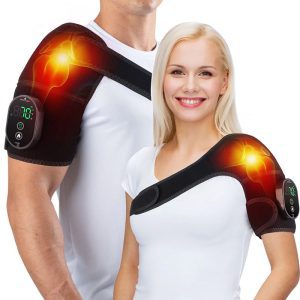

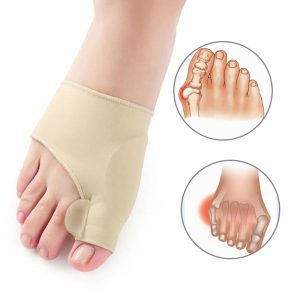
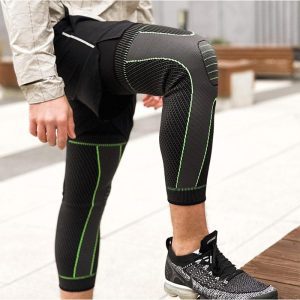

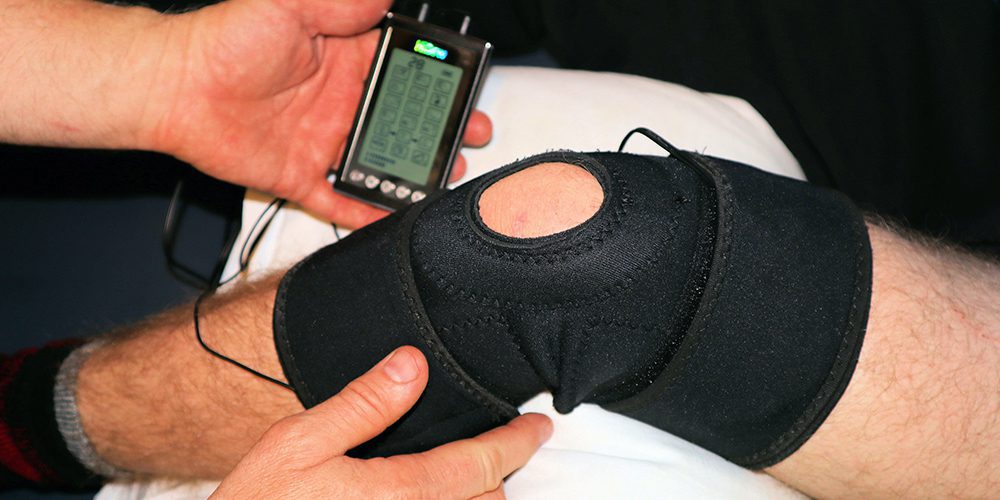


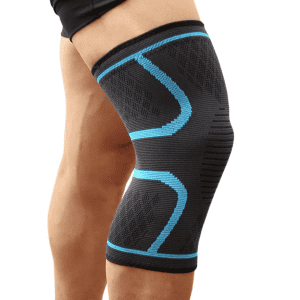
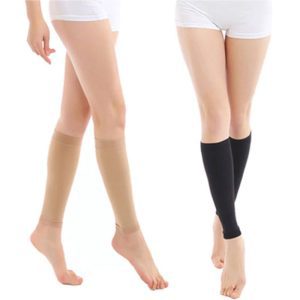

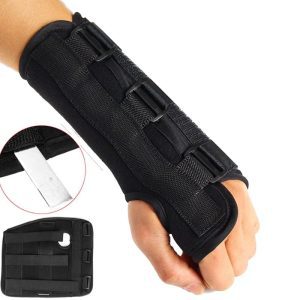

One Response
I never knew that leg and foot pain could come from dehydration or an injury. My friend talked about how walking is a chore because of her feet. I should let her know about this so we can find a podiatrist that can diagnose her problem when it persists.